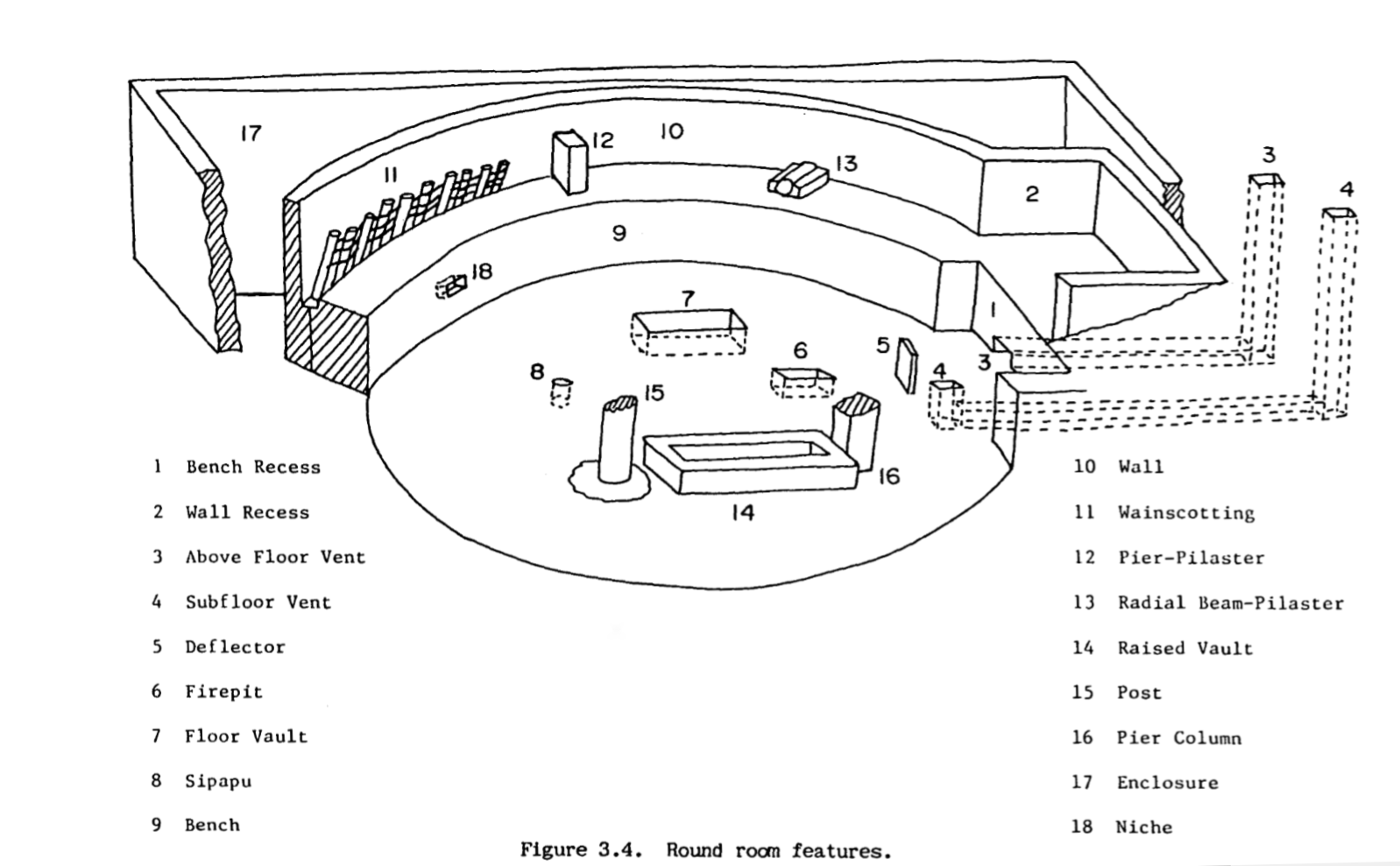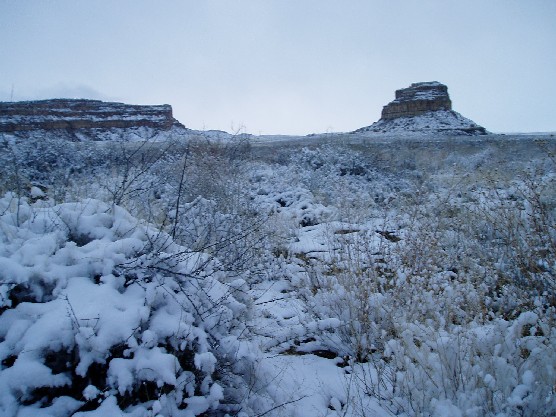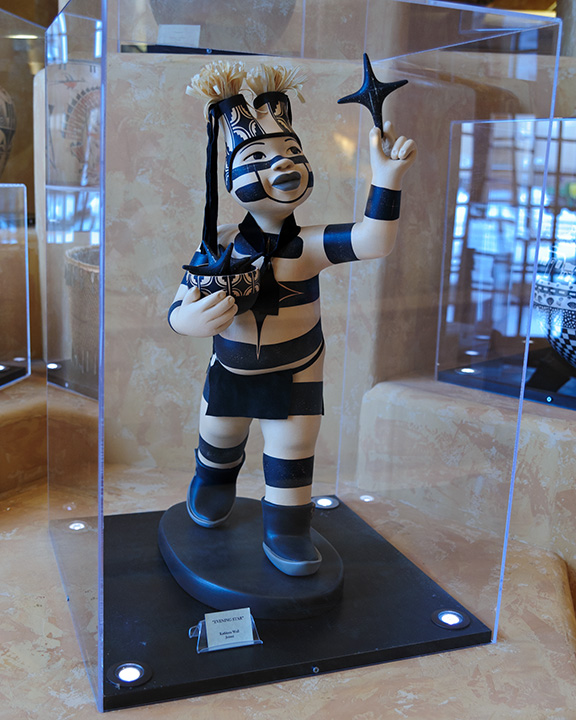|
Kiva
A kiva is a space used by Puebloans for rites and political meetings, many of them associated with the kachina belief system. Among the modern Hopi and most other Pueblo peoples, "kiva" means a large room that is circular and underground, and used for spiritual ceremonies. Similar subterranean rooms are found among ruins in the North-American South-West, indicating uses by the ancient peoples of the region including the ancestral Puebloans, the Mogollon, and the Hohokam. Those used by the ancient Pueblos of the Pueblo I Period and following, designated by the Pecos Classification system developed by archaeologists, were usually round and evolved from simpler pit-houses. For the Ancestral Puebloans, these rooms are believed to have had a variety of functions, including domestic residence along with social and ceremonial purposes. Evolution During the late 8th century, Mesa Verdeans started building square pit structures that archeologists call protokivas. They were typ ... [...More Info...] [...Related Items...] OR: [Wikipedia] [Google] [Baidu] |
Kiva
A kiva is a space used by Puebloans for rites and political meetings, many of them associated with the kachina belief system. Among the modern Hopi and most other Pueblo peoples, "kiva" means a large room that is circular and underground, and used for spiritual ceremonies. Similar subterranean rooms are found among ruins in the North-American South-West, indicating uses by the ancient peoples of the region including the ancestral Puebloans, the Mogollon, and the Hohokam. Those used by the ancient Pueblos of the Pueblo I Period and following, designated by the Pecos Classification system developed by archaeologists, were usually round and evolved from simpler pit-houses. For the Ancestral Puebloans, these rooms are believed to have had a variety of functions, including domestic residence along with social and ceremonial purposes. Evolution During the late 8th century, Mesa Verdeans started building square pit structures that archeologists call protokivas. They were typ ... [...More Info...] [...Related Items...] OR: [Wikipedia] [Google] [Baidu] |
False Kiva
The False Kiva is a human-made stone circle of unknown origin in a cave in a remote area of Canyonlands National Park, which is located in U.S. state of Utah. It was closed by Canyonlands National Park rangers in early August 2018, as a result of vandalism. It requires some hiking knowledge or special directions to find. It has become a popular spot for photographers capturing the Southwest, offering a unique frame for the dramatic thunderstorms or clear skies beyond. Origin While located in a naturally occurring alcove, the name ''False Kiva'' arises from the uncertainty about the circle of stones' origins and purpose, whether it is really an authentic kiva, a location used for religious purposes. Disclosure controversy Debate rages on whether to disclose the exact location of False Kiva as it enjoys a semi-protected status. While park rangers are required to disclose the location of the Class II site, it does not appear on official maps of the park. Because of the remoten ... [...More Info...] [...Related Items...] OR: [Wikipedia] [Google] [Baidu] |
Ancestral Puebloans
The Ancestral Puebloans, also known as the Anasazi, were an ancient Native American culture that spanned the present-day Four Corners region of the United States, comprising southeastern Utah, northeastern Arizona, northwestern New Mexico, and southwestern Colorado. They are believed to have developed, at least in part, from the Oshara tradition, which developed from the Picosa culture. The people and their archaeological culture are often referred to as ''Anasazi'', meaning "ancient enemies", as they were called by Navajo. Contemporary Puebloans object to the use of this term, with some viewing it as derogatory. The Ancestral Puebloans lived in a range of structures that included small family pit houses, larger structures to house clans, grand pueblos, and cliff-sited dwellings for defense. They had a complex network linking hundreds of communities and population centers across the Colorado Plateau. They held a distinct knowledge of celestial sciences that found form in ... [...More Info...] [...Related Items...] OR: [Wikipedia] [Google] [Baidu] |
Hopi
The Hopi are a Native American ethnic group who primarily live on the Hopi Reservation in northeastern Arizona, United States. As of the 2010 census, there are 19,338 Hopi in the country. The Hopi Tribe is a sovereign nation within the United States and has government-to-government relations with the United States federal government. Particular villages retain autonomy under the Hopi Constitution and Bylaws. The Hopi language is one of 30 in the Uto-Aztecan language family. The majority of Hopi people are enrolled in the Hopi Tribe of Arizona but some are enrolled in the Colorado River Indian Tribes. The Hopi Reservation covers a land area of . The Hopi encountered Spaniards in the 16th century, and are historically referred to as Pueblo people, because they lived in villages (''pueblos'' in the Spanish language). The Hopi are thought to be descended from the Ancestral Puebloans ( Hopi: ''Hisatsinom''), who constructed large apartment-house complexes and had an advanced cu ... [...More Info...] [...Related Items...] OR: [Wikipedia] [Google] [Baidu] |
Chaco Canyon
Chaco Culture National Historical Park is a United States National Historical Park in the American Southwest hosting a concentration of pueblos. The park is located in northwestern New Mexico, between Albuquerque and Farmington, in a remote canyon cut by the Chaco Wash. Containing the most sweeping collection of ancient ruins north of Mexico, the park preserves one of the most important pre-Columbian cultural and historical areas in the United States. Between AD 900 and 1150, Chaco Canyon was a major center of culture for the Ancestral Puebloans. Chacoans quarried sandstone blocks and hauled timber from great distances, assembling fifteen major complexes that remained the largest buildings ever built in North America until the 19th century. Evidence of archaeoastronomy at Chaco has been proposed, with the "Sun Dagger" petroglyph at Fajada Butte a popular example. Many Chacoan buildings may have been aligned to capture the solar and lunar cycles, requiring generations of astron ... [...More Info...] [...Related Items...] OR: [Wikipedia] [Google] [Baidu] |
Mesa Verde National Park
Mesa Verde National Park is an American national park and UNESCO World Heritage Site located in Montezuma County, Colorado. The park protects some of the best-preserved Ancestral Puebloan archaeological sites in the United States. Established by Congress and President Theodore Roosevelt in 1906, the park occupies near the Four Corners region of the American Southwest. With more than 5,000 sites, including 600 cliff dwellings, it is the largest archaeological preserve in the United States. Mesa Verde (Spanish for "green table", or more specifically "green table mountain") is best known for structures such as Cliff Palace, thought to be the largest cliff dwelling in North America. Starting BC Mesa Verde was seasonally inhabited by a group of nomadic Paleo-Indians known as the Foothills Mountain Complex. The variety of projectile points found in the region indicates they were influenced by surrounding areas, including the Great Basin, the San Juan Basin, and the Rio Grande V ... [...More Info...] [...Related Items...] OR: [Wikipedia] [Google] [Baidu] |
Chacoan Round Room Features
Chaco Culture National Historical Park is a United States National Historic Sites (United States), National Historical Park in the Southwestern United States, American Southwest hosting a concentration of pueblos. The park is located in northwestern New Mexico, between Albuquerque, New Mexico, Albuquerque and Farmington, New Mexico, Farmington, in a remote canyon cut by the Chaco Wash. Containing the most sweeping collection of ancient ruins north of Mexico, the park preserves one of the most important pre-Columbian cultural and historical areas in the United States. Between AD 900 and 1150, Chaco Canyon was a major center of culture for the Ancestral Puebloans. Chacoans quarried sandstone blocks and hauled timber from great distances, assembling fifteen major complexes that remained the largest buildings ever built in North America until the 19th century. Evidence of archaeoastronomy at Chaco has been proposed, with the "Sun Dagger" petroglyph at Fajada Butte a popular example ... [...More Info...] [...Related Items...] OR: [Wikipedia] [Google] [Baidu] |
Puebloans
The Puebloans or Pueblo peoples, are Native Americans in the Southwestern United States who share common agricultural, material, and religious practices. Currently 100 pueblos are actively inhabited, among which Taos, San Ildefonso, Acoma, Zuni, and Hopi are the best-known. Pueblo people speak languages from four different language families, and each Pueblo is further divided culturally by kinship systems and agricultural practices, although all cultivate varieties of maize. Pueblo peoples have lived in the American Southwest for millennia and descend from Ancestral Pueblo peoples. The term ''Anasazi'' is sometimes used to refer to ancestral Pueblo people but it is now largely minimized. ''Anasazi'' is a Navajo word that means ''Ancient Ones'' or ''Ancient Enemy'', hence Pueblo peoples' rejection of it (see exonym). ''Pueblo'' is a Spanish term for "village." When Spaniards entered the area, beginning in the 16th-century with the founding of Nuevo México, they came across ... [...More Info...] [...Related Items...] OR: [Wikipedia] [Google] [Baidu] |
Koshare Indian Museum And Dancers
The Pueblo clowns (sometimes called sacred clowns) are jesters or tricksters in the Kachina religion (practiced by the Pueblo natives of the southwestern United States). It is a generic term, as there are a number of these figures in the ritual practice of the Pueblo people. Each has a unique role; belonging to separate Kivas (secret societies or confraternities) and each has a name that differs from one mesa or pueblo to another. Roles The clowns perform monthly rituals, summer (for rain), November - for the gods, for curing society, black magic. Among the Hopi/Tewa there are four distinct clowns. The Koyi'msĭ (also called Ho'tomeli'pung Tewa. Ta'chûktĭ); Chüʳkü'wĭmkya; Pai'yakyamü or Koyala; Koyi'msĭ (also called Ta'chûktĭ) and Pi'ptuyakyamü (or "arrivals"). In order for a clown to perform meaningful social commentary via humor, the clown's identity must usually be concealed. The sacred clowns of the Pueblo people, however, do not employ masks but rely on body ... [...More Info...] [...Related Items...] OR: [Wikipedia] [Google] [Baidu] |
Pueblo Clown
The Pueblo clowns (sometimes called sacred clowns) are jesters or tricksters in the Kachina religion (practiced by the Pueblo natives of the southwestern United States). It is a generic term, as there are a number of these figures in the ritual practice of the Pueblo people. Each has a unique role; belonging to separate Kivas (secret societies or confraternities) and each has a name that differs from one mesa or pueblo to another. Roles The clowns perform monthly rituals, summer (for rain), November - for the gods, for curing society, black magic. Among the Hopi/Tewa there are four distinct clowns. The Koyi'msĭ (also called Ho'tomeli'pung Tewa. Ta'chûktĭ); Chüʳkü'wĭmkya; Pai'yakyamü or Koyala; Koyi'msĭ (also called Ta'chûktĭ) and Pi'ptuyakyamü (or "arrivals"). In order for a clown to perform meaningful social commentary via humor, the clown's identity must usually be concealed. The sacred clowns of the Pueblo people, however, do not employ masks but rely on body ... [...More Info...] [...Related Items...] OR: [Wikipedia] [Google] [Baidu] |
Pueblo III Era
The Pueblo III Period (AD 1150 to AD 1350) was the third period, also called the "Great Pueblo period" when Ancestral Puebloans lived in large cliff-dwelling, multi-storied pueblo, or cliff-side talus house communities. By the end of the period, the ancient people of the Four Corners region migrated south into larger, centralized pueblos in central and southern Arizona and New Mexico. The Pueblo III Period (Pecos Classification) is roughly the same as the "Great Pueblo Period" and "Classic Pueblo Period" (AD 1100 to AD 1300). It is preceded by the Pueblo II Period, and is followed by the Pueblo IV Period. Architecture During the Pueblo III Period most people lived in communities with large multi-storied dwellings. Some moved into community centers at pueblos canyon heads, such as Sand Canyon and Goodman Point pueblos in the Montezuma Valley; others moved into cliff dwellings on canyon shelves such as Mesa Verde or Keet Seel in the Navajo National Monument. Typical villages h ... [...More Info...] [...Related Items...] OR: [Wikipedia] [Google] [Baidu] |
Bandelier Kiva
Bandelier National Monument is a United States National Monument near Los Alamos in Sandoval and Los Alamos counties, New Mexico. The monument preserves the homes and territory of the Ancestral Puebloans of a later era in the Southwest. Most of the pueblo structures date to two eras, dating between 1150 and 1600 AD. The monument is of the Pajarito Plateau, on the slopes of the Jemez volcanic field in the Jemez Mountains. Over 70% of the monument is wilderness, with over one mile of elevation change, from about along the Rio Grande to over at the peak of Cerro Grande on the rim of the Valles Caldera, providing for a wide range of life zones and wildlife habitats. of road and more than of hiking trails are built. The monument protects Ancestral Pueblo archeological sites, a diverse and scenic landscape, and the country's largest National Park Service Civilian Conservation Corps National Landmark District. Two-thirds of the park, , is designated as the Bandelier Wildern ... [...More Info...] [...Related Items...] OR: [Wikipedia] [Google] [Baidu] |

.jpg)
.jpg)






.jpg)
